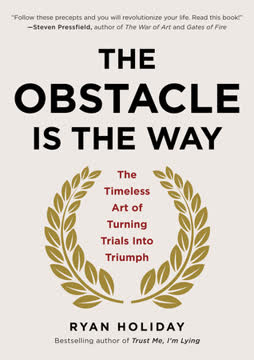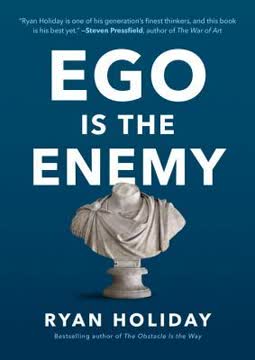つの重要なポイント
1. 抵抗は創造性と個人の成長の敵である
抵抗は地球上で最も有害な力である。それは貧困、病気、勃起不全よりも多くの不幸の根源である。
抵抗の定義: 抵抗とは、創造的および個人的成長の試みに反対する目に見えない内的な力である。それは以下の形で現れる:
- 先延ばし
- 自己疑念
- 恐怖
- 合理化
- 依存症
- 自己破壊
抵抗を克服する方法: 抵抗に対抗するためには:
- それを個人的な失敗ではなく普遍的な力として認識する
- プロジェクトが重要であればあるほど、抵抗が強くなることを理解する
- 感情に関係なく毎日仕事に取り組むことを約束する
- 結果ではなくプロセスに焦点を当てる
2. プロになることが抵抗を克服する鍵である
アーティストがプロになる瞬間は、彼の最初の子供の誕生と同じくらい画期的である。一度にすべてが変わる。
プロフェッショナルの特徴:
- 毎日欠かさず現れる
- 長期的なコミットメントを持つ
- 労働に対して報酬を受け取る
- 仕事に過度に同一化しない
- 技術を習得する
- 仕事に対してユーモアのセンスを持つ
アマチュアとプロフェッショナル: アマチュアは抵抗に敗北するが、プロフェッショナルはそれを乗り越える。プロフェッショナルは恐怖や自己疑念がプロセスの一部であり、辞める理由ではないことを理解している。彼らはインスピレーションや完璧な条件を待つのではなく、一貫した行動に焦点を当てる。
3. 恐怖は重要なことのサインであり、直面しなければならない
恐怖で麻痺しているか?それは良いサインだ。恐怖は良い。自己疑念と同様に、恐怖は指標である。恐怖は私たちが何をしなければならないかを教えてくれる。
恐怖の理解: 恐怖はしばしば以下を示す:
- プロジェクトや目標の重要性
- 成長と学習の機会
- 重大な変化や影響の可能性
恐怖に直面する: 恐怖を克服するためには:
- それを創造的プロセスの自然な一部として認識する
- 重要な仕事に向かうためのコンパスとして使用する
- 恐怖を感じながらも行動を起こす
- 勇気とは恐怖の不在ではなく、恐怖に直面して行動することであると理解する
4. プロフェッショナリズムには規律、コミットメント、忍耐が必要である
プロフェッショナルはそれをよく知っている。彼は抵抗を尊重する。今日屈服すれば、どんなにもっともらしい理由があっても、明日は二倍の確率で屈服することを知っている。
プロフェッショナリズムの発展:
- 一貫した作業ルーチンを確立する
- 仕事と私生活の間に明確な境界を設定する
- 短期的な満足よりも長期的な目標に焦点を当てる
- 忍耐と持続力を養う
- スキルと知識を継続的に向上させる
プロフェッショナリズムの利点:
- 生産性の向上
- 挫折に対する回復力の向上
- 仕事の質の向上
- 評判と信頼性の向上
5. 本当の自己は私たちの真の使命と運命である
この人生での私たちの仕事は、理想的な自分に形作ることではなく、すでにある自分を見つけ、それになることである。
本当の自己の発見:
- 子供時代の興味や自然な傾向を振り返る
- 喜びとフローをもたらす活動に注意を払う
- お金が問題でなければ何をするかを考える
- 核となる価値観や信念を特定する
本当の自己を生きる:
- キャリアや人生の選択を真の自己と一致させる
- 他人の期待に従う社会的圧力に抵抗する
- 独自の才能と視点を受け入れる
- 本当の声を継続的に洗練し、表現する
6. インスピレーションは高次の領域または無意識の心から来る
毎日座って仕事をすると、力が私たちの周りに集中する。ミューズは私たちの献身を認める。彼女は承認する。私たちは彼女の目にかなった。
インスピレーションの源:
- 無意識の心
- 高次の精神的領域
- 集合的な人間の意識
- 個人的な経験と記憶
インスピレーションを育む:
- 一貫した創造的な習慣を確立する
- 孤独と反省のための空間を作る
- 多様なアイデアや経験に触れる
- インスピレーションが見つからないときでも創造的プロセスを信じる
7. 自己は創造性と成長の源であり、エゴではない
自己は創造し、進化したいと願う。エゴは現状を維持したい。
自己とエゴ:
- 自己: 神聖なものとつながり、成長と進化を求める
- エゴ: 物質的な存在に焦点を当て、変化に抵抗する
自己にアクセスする:
- 瞑想やマインドフルネスを実践する
- 創造的な活動に従事する
- 意識を拡大する経験を求める
- 自己認識と内省を養う
8. 成功はしばしば快適ゾーンと部族の包含を離れることを意味する
私たちは自分が思っている以上の存在であることを発見することを恐れている。親や子供、教師が思っている以上の存在であることを恐れている。私たちは、静かな小さな声が私たちに告げる才能を実際に持っていることを恐れている。
成長を受け入れる:
- 個人的な進化が一部の人々を疎外する可能性があることを認識する
- 古いアイデンティティや関係を超えることをいとわない
- 成長を支援する新しいコミュニティを求める
- 失ったものに代わる本物のつながりが生まれることを信じる
成功の恐怖を克服する:
- 慣れ親しんだ領域を離れる恐怖を認める
- 成長にはしばしば不快感が伴うことを認識する
- 成功の潜在的な利益に焦点を当てる
- 進化を奨励するサポートシステムを構築する
9. アーティストは自分の技術に集中し、創造的プロセスを神秘化しない
プロフェッショナルは彼女の仕事を芸術ではなく技術と見なす。彼女が芸術に神秘的な次元がないと信じているからではない。逆に、彼女はすべての創造的な試みが神聖であることを理解しているが、それにこだわらない。
創造性の神秘化を解く:
- 技術的スキルの向上に焦点を当てる
- 一貫した作業ルーチンを確立する
- プロジェクトを管理可能なタスクに分解する
- 自分の分野で成功したアーティストの技術を研究する
技術とインスピレーションのバランス:
- 創造性の神秘的な側面を尊重する
- 規律ある作業と自発的なインスピレーションの両方に空間を与える
- 技術の習得が創造的な自由を高めることを認識する
- 一貫した努力が突破口につながることを信じる
10. ミューズを呼び起こすことが創造的な試みに役立つ
サンタフェに行ったことがありますか?そこには「癒し」のサブカルチャーがあります。雰囲気に何か治療的なものがあるという考えです。自分を整えるための安全な場所です。
ミューズの概念:
- インスピレーションと創造性の擬人化
- 高次の領域や集合的無意識とのつながり
- 創造的プロセスを外在化し、尊重する方法
ミューズを呼び起こす:
- 創造的な作業を始めるための個人的な儀式を開発する
- 芸術のための専用スペースを作る
- 瞑想やビジュアライゼーションを使用してインスピレーションとつながる
- アイデアに対して開放的で受容的な態度を養う
最終更新日:
FAQ
What's "The War of Art" about?
- Author's Focus: "The War of Art" by Steven Pressfield is about overcoming the internal barriers that prevent creative individuals from achieving their goals.
- Central Theme: The book identifies "Resistance" as the primary enemy of creativity, which manifests as procrastination, self-doubt, and fear.
- Structure: It is divided into three parts: "Defining the Enemy," "Combating Resistance," and "Beyond Resistance," each offering insights and strategies to conquer creative blocks.
- Purpose: The book aims to inspire and guide artists, writers, and entrepreneurs to push through their internal struggles and realize their creative potential.
Why should I read "The War of Art"?
- Practical Advice: It provides actionable strategies for overcoming procrastination and self-doubt, common issues faced by creatives.
- Inspiration: The book is motivational, encouraging readers to pursue their true calling and not succumb to fear or societal pressures.
- Insightful Concepts: It introduces the concept of "Resistance" as a universal force that hinders creativity, offering a new perspective on personal struggles.
- Empowerment: Reading it can empower you to take control of your creative process and commit to your work with a professional mindset.
What are the key takeaways of "The War of Art"?
- Resistance as the Enemy: Recognize that Resistance is a natural force that opposes creative endeavors and must be confronted daily.
- Turning Pro: Adopt a professional attitude towards your creative work, showing up consistently and treating it with seriousness and dedication.
- Inspiration and the Muse: Understand that inspiration often comes after you start working, not before, and that invoking the Muse can help in the creative process.
- Territorial vs. Hierarchical Thinking: Focus on your work for its own sake (territorial) rather than for external validation (hierarchical).
How does Steven Pressfield define "Resistance"?
- Universal Force: Resistance is described as a destructive force within human nature that opposes any act that might lead to personal growth or creativity.
- Manifestations: It can appear as procrastination, self-doubt, fear, rationalization, and other forms of self-sabotage.
- Internal Origin: Resistance is self-generated and arises from within, often disguised as legitimate reasons not to pursue creative work.
- Impersonal Nature: It is not out to get you personally; it is a natural force that acts objectively, like gravity.
What is the "Turning Pro" concept in "The War of Art"?
- Professional Mindset: Turning Pro means adopting a professional attitude towards your creative work, treating it as a vocation rather than a hobby.
- Commitment: It involves showing up every day, regardless of circumstances, and dedicating yourself fully to your craft.
- Discipline and Routine: Professionals work through fear and Resistance by establishing routines and maintaining discipline.
- Focus on Mastery: The professional focuses on mastering the craft, understanding that success is a by-product of consistent effort.
What role does "Inspiration" play in "The War of Art"?
- Result of Work: Inspiration is seen as a result of consistent work rather than a prerequisite for starting.
- Invocation of the Muse: Pressfield suggests invoking the Muse, a metaphor for divine inspiration, to aid in the creative process.
- Concentration of Power: When you sit down to work, power concentrates around you, attracting ideas and insights.
- Higher Realm: Inspiration is linked to a higher realm, suggesting that creativity is a divine or spiritual process.
How does "The War of Art" address procrastination?
- Common Manifestation: Procrastination is identified as the most common form of Resistance, often rationalized as harmless.
- Habitual Nature: It can become a habit, leading to a lifetime of unfulfilled potential and regret.
- Immediate Action: The book emphasizes the power of starting immediately, as every moment holds the potential to change your life.
- Overcoming Procrastination: The key is to recognize it as Resistance and to act in spite of it, committing to your work daily.
What are the best quotes from "The War of Art" and what do they mean?
- "Resistance is the most toxic force on the planet." This highlights the destructive power of Resistance in preventing individuals from achieving their potential.
- "The more important a call or action is to our soul’s evolution, the more Resistance we will feel toward pursuing it." This suggests that the level of Resistance is directly proportional to the importance of the task.
- "The professional loves it so much he dedicates his life to it." This emphasizes the commitment and dedication required to overcome Resistance and succeed in creative endeavors.
- "When we sit down each day and do our work, power concentrates around us." This illustrates the idea that consistent effort attracts inspiration and creative energy.
How does "The War of Art" differentiate between "Territory" and "Hierarchy"?
- Territorial Orientation: Working territorially means focusing on your work for its own sake, deriving satisfaction from the act itself.
- Hierarchical Orientation: Working hierarchically involves seeking external validation and defining success by others' opinions.
- Sustenance from Territory: A territory provides sustenance and fulfillment without external input, while hierarchy can lead to insecurity and dependence on others.
- Creative Focus: The book advocates for a territorial approach, encouraging artists to concentrate on their craft rather than external recognition.
What is the significance of "The Higher Realm" in "The War of Art"?
- Source of Inspiration: The Higher Realm is where inspiration and creativity originate, a place beyond the material world.
- Divine Assistance: Pressfield suggests that unseen forces, like muses or angels, support and sustain creative efforts.
- Connection to the Self: The Higher Realm is linked to the Self, the part of us that is connected to the divine and seeks to create.
- Spiritual Dimension: Creativity is portrayed as a spiritual journey, with the Higher Realm providing guidance and insight.
How does "The War of Art" suggest dealing with fear?
- Fear as an Indicator: Fear is seen as a sign of what we must do, indicating the importance of the task to our soul's growth.
- Direct Proportion: The more fear we feel, the more significant the task is to our personal evolution.
- Acting Despite Fear: The book encourages acting in the face of fear, understanding that it is a natural part of the creative process.
- Fear of Success: It also addresses the fear of success, which can be as paralyzing as the fear of failure, urging readers to embrace their potential.
What is the role of "Self" and "Ego" in "The War of Art"?
- Ego's Beliefs: The Ego is concerned with material existence, self-preservation, and external validation, often hindering creative efforts.
- Self's Connection: The Self is connected to the divine, seeking growth, creativity, and unity with others.
- Conflict: The Ego and the Self are in constant conflict, with the Ego producing Resistance to maintain the status quo.
- Creative Alignment: Aligning with the Self allows for true creative expression, as it is the source of inspiration and authenticity.
レビュー
本書『The War of Art』は賛否両論を受けている。創造的なブロックを克服するためのモチベーショナルな一助として、規律やプロフェッショナリズムに関する実践的なアドバイスが称賛される一方で、内容の繰り返しや根拠のない主張、そして潜在的に有害なアドバイスが批判されている。多くの読者は最初の二つのセクションを洞察に富んだものと感じるが、精神的な第三部を好まない。読者はPressfieldの率直さと簡潔な文体を評価するが、彼の口調を批判的と感じる人もいる。本書の中心メッセージである「抵抗」を克服することは、多くのクリエイティブな人々に共鳴しているが、その論争的な側面も無視できない。













